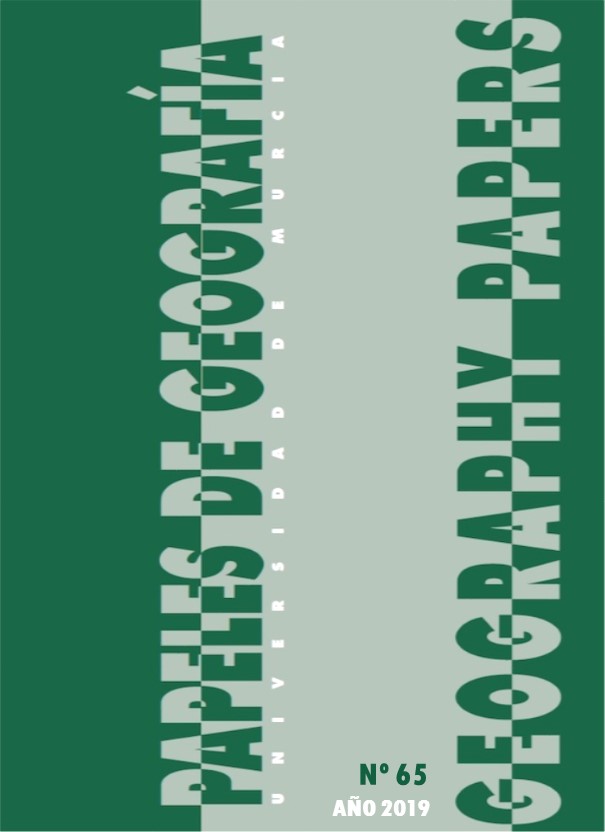Four years after the catastrophe, are educational institutions in the Region of Murcia in Spain prepared for the next seismic disaster?
Abstract
A magnitude 6.0 or more earthquake is expected on the Alhama de Murcia fault, the most active in the area of Murcia, located in the south-eastern Spain. On May 11th 2011, within one hour and 42 minutes period, a magnitude 4.5 and a magnitude 5.1 earthquakes shake the towns of Lorca and Totana, killing nine people and injuring 330. However, four years after the catastrophe, these towns do not seem to be prepared to face a moderate earthquake. All elements are gathered to result in a disaster, i.e. a surface geomorphology conducive for site effects, constructions which do not comply the earthquake-resistant requirements and a lack of knowledge from the population about the seismic risk. This report proposes an analysis of the level of vulnerability of educational institutions against the seismic risk in Lorca and Totana based on creating a vulnerability index which considers social and structural risk factors. As well as a series of mitigation measures proposals to face the next major seismic disaster.Downloads
-
Abstract548
-
PDF (Español (España))339
References
BENITO OTERINO, B., RIVAS MEDINA, A., GASPAR-ESCRIBANO, J.M., MURPHY, P. (2012): El terremoto de Lorca (2011) en el contexto de la peligrosidad y el riesgo sísmico en Murcia. Física de la Tierra 24:255-287
BSSC (Building Seismic Safety Council) (2006): Earthquake-resistance requirements. In: FEMA 232, Homebuilders’ Guide to Earthquake Resistant Design and Construction, 2nd edition, Washington D.C. 21-48
CAPOTE, R., ESTÉVEZ, A., SANTANACH, P., SANZ DE GALDEANO, C., SIMÓN, J.L. (2011): ¿Dónde y por qué se producen terremotos en la península ibérica? Enseñanza de las Ciencias de la Tierra 19.3:317-328.
CERVERA, J. (2012): Dynamique des structures. Vulnérabilité aux bâtiments. Construction parasismique. Centre d’Innovation en Technologie pour le Développement Humain. Université Polytechnique de Madrid, 75 p.
GUHA-SAPIR, D., HOYOIS, P., WALLEMACQ, P., BELOW, R. (2016): Annual Disaster Statistical Review 2016. The numbers and trends. Centre for Research on the Epidemiology of Disasters (CRED), Institute of Health and Society (IRSS), Université catholique de Louvain, Brussels, Belgium
SALCEDO HERNÁNDEZ, J.C., CAMPESINO FERNÁNDEZ, A.J. (2012): Experiencias constructivas del terremoto de Lorca. Investigaciones geográficas 57:7-37
THOURET, J.C., D’ERCOLE, R. (1996): Vulnérabilité aux risques naturels en milieu urbain : effets, facteurs et réponses sociales. Cahiers des Sciences Humaines 96-2:407-422
VISSERS, R.L.M., MEIJNINGER, B.M.L. (2011): The 11 May 2011 earthquake at Lorca (SE Spain) viewed in a structural-tectonic context. Solid Earth 2:199-204
The manuscripts published in Papeles de Geografía are subject to the following terms and conditions:
1. The publishing house of the University of Murcia (Servicio de Publicaciones de la Universidad de Murcia) keeps the copyright of the published manuscripts favouring and allowing the use and distribution of such works under the licence in 2 below.
© Servicio de Publicaciones, Universidad de Murcia, 2011
2. Manuscripts are published electronically under an Attribution Non-Commercial No Derivatives 3.0 Unported Creative Commons Licence Spain (Legal text). Readers are free to copy, use, share and redistribute the material in any medium or format as long as (i) appropriate credit is given to authors and original source (journal, publishing house and URL); (ii) the material is not used for commercial purposes and (iii) this licence and restrictions are stated.
3. Self-archive. Authors are allowed and encouraged to distribute pre-print versions (prior to evaluation) and/or post-print versions (after evaluation and accepted for publication) of their manuscripts. This favours the dissemination and early distribution of scientific knowledge and citing.





